

Home to the world-famous stone Buddha from China's Tang Dynasty (618—907 A.D.), Leshan Giant Buddha Scenic Area in Southwestern China’s Sichuan province is a veritable cradle of Buddhism in China. But a walk through the area has more to offer than just the ancient history of Buddhism; touring the area reveals diverse religious cultures and offers a special sightseeing experience.
Hiking past dense trees, which are often shrouded in a cool mist, climbing the many stairs to the peak of Lingyun Mountain can be an unexpectedly refreshing experience. On top of the mountain is the first Buddhist element on the tour: Lingbao Tower. Lingbao Tower has hosted the daily meditation of monks since the Tang Dynasty. First built in the Tang Dynasty and having undergone a major refurbishment in 1554 A.D., the 29-meter-tall structure still stores partial Buddhist scripts as well as the remains of Hai Tong, a renowned monk who led the construction of the Giant Buddha in 713 A.D.
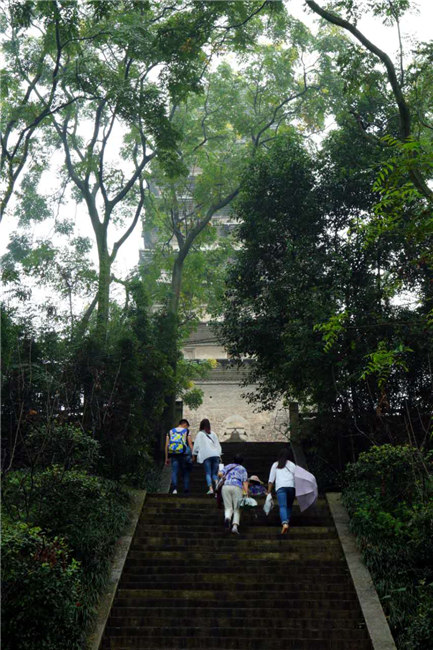
Only 180 kilometers away from the scenic area is Qingchengshan Mountain, the birthplace of Taoism. Having coalesced into a formal religious organization during the Han Dynasty (206BC-220AD), Taoism concerns itself with how to maintain human behavior in accordance with the alternating cycles of nature. In the Ming Dynasty (1368–1644), an official named An You worked in the shrine, studying and interpreting the I Ching, a Taoist text. An You led his disciples to carve inscriptions, including some of the eight trigrams used in Taoist cosmology. The I Ching is a divination system that originated around 1150 B.C. It contributes to the Taoist doctrine of managing yin and yang, which describes how seemingly opposite or contrary forces may actually be complementary and interconnected.
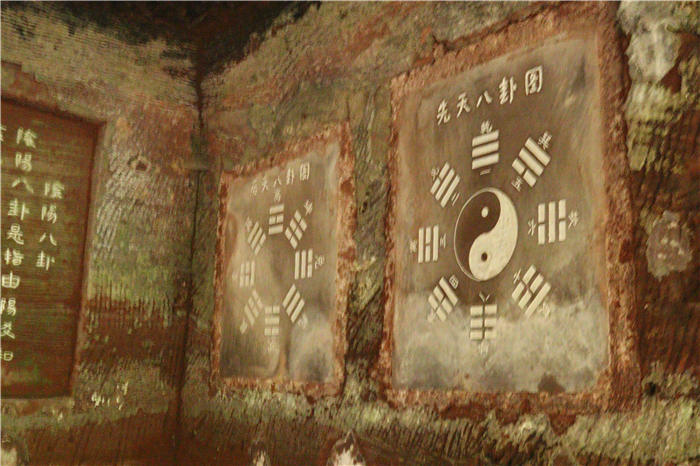
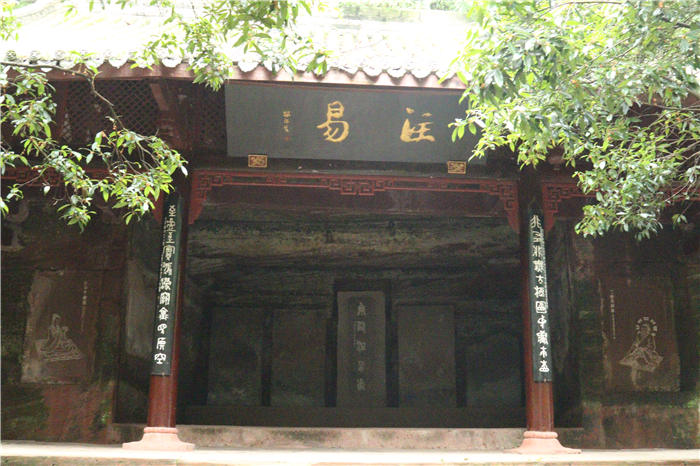
The tour then continues on to the main attraction, Lingyun Temple, where it’s possible to view the 71-meter-tall Giant Buddha. The Depositary of Buddhist Texts, located in the temple, is a very impressive structure infused with elements of Islamic style. It was first build in the Tang Dynasty, but was later reconstructed during the time of the Republic of China (1912-1949). In that era, when Islam was no longer repressed by the Qing Empire (1644–1911), it became a trend for various Islamic elements to be integrated into religious buildings. However, alongside the Islamic details are Buddhist statues and carved frescos, which together make for a solemn environment where Buddhist believers can be seen kneeling in front of the altar to worship the Buddha.
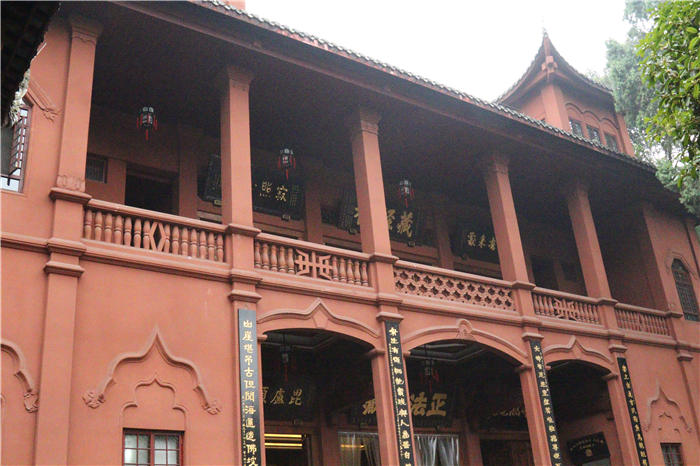

Daxiong Palace is home to three bronze statues from the Ming Dynasty (1368-1683). The statues represent the three lives of a Buddha: the Previous Life, This Life and the Next Life. Since the concept of transmigration of the soul is central to Buddhist thought, the doctrine urges believers to be grateful for their parents, their offspring and their own lives.
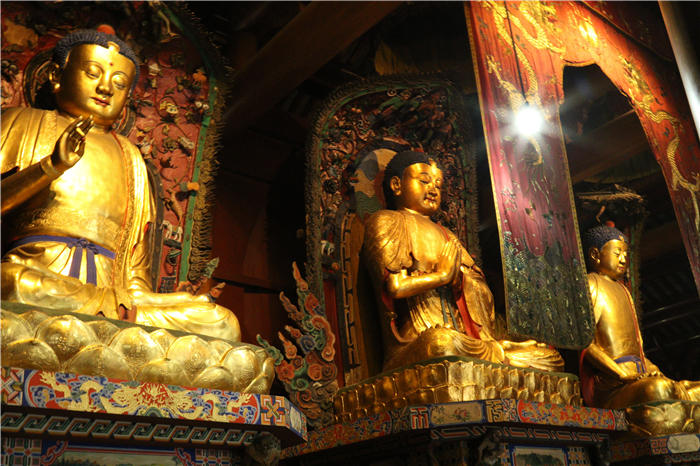
Of course, the 71-meter-tall Buddha, built during the Tang Dynasty, is the star attraction. The colossal statue depicts a seated Maitreya Buddha with its hands resting on its knees. It is carved from a cliff face that lies at the confluence of the Minjiang, Dadu and Qingyi Rivers in the southern part of Sichuan province. The stone sculpture faces Mount Emei, with the rivers flowing below its feet. It is the largest stone Buddha in the world, and is by far the tallest pre-modern statue. The Leshan Giant Buddha Scenic Area has been listed as a UNESCO World Heritage Site since 1996.
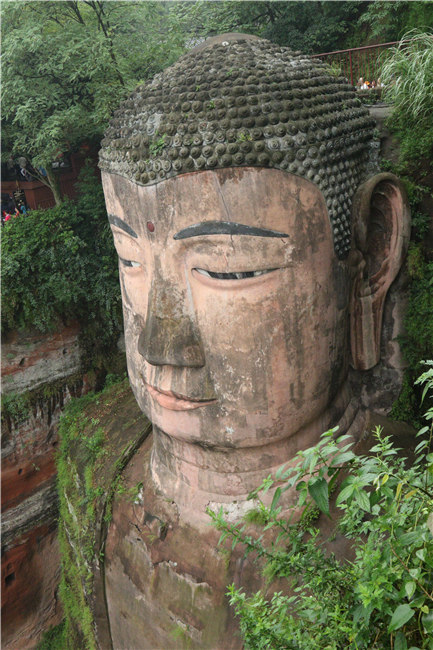
Construction on the Buddha was led by a Chinese monk named Hai Tong, who was said to have spent 10 years collecting resources to get the project started. He hoped that the Buddha would calm the turbulent waters that plagued shipping vessels traveling down the river. When funding for the project was threatened, he is said to have gouged out his own eyes to demonstrate his piety and sincerity. After his death, however, construction stalled due to insufficient funding. About 70 years later, a local official decided to sponsor the project, and the construction was finally completed by Hai Tong's disciples.
The large-scale construction resulted in the removal of a significant quantity of stone from the cliff face, which was then deposited in the river. As a result, the currents were indeed altered by the statue, making the water safe for passing ships.
Several drainage passages are hidden in the Buddha's hair, collar and chest, and holes in the back of its ears and chest protect the Buddha from serious erosion and weathering. The statue has been lovingly maintained throughout its 1,200-year history. It receives an average of about 20,000 tourists every day, and up to 40,000 in the busy summer season.
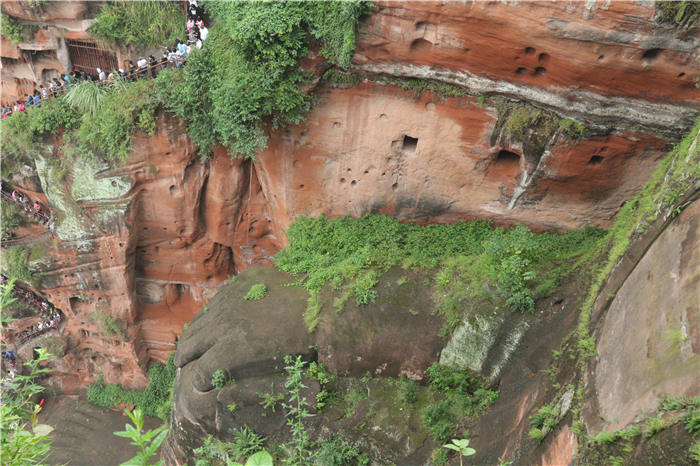
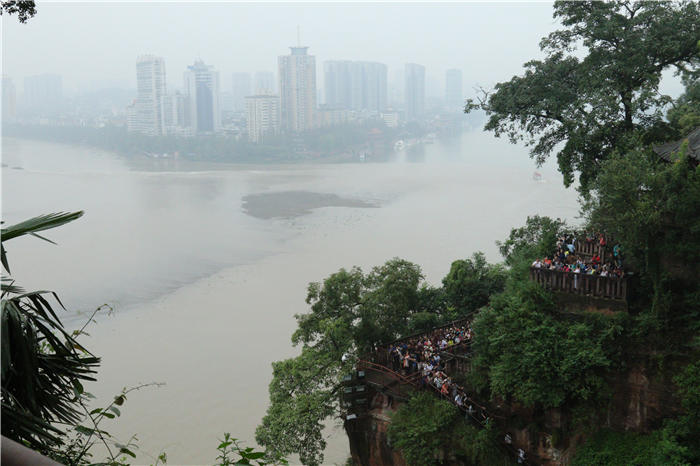

Day|Week

 Who Will Fit The Chinese Roles In Game Of Thrones?
Who Will Fit The Chinese Roles In Game Of Thrones? China's Hubei Shennongjia added to World Heritage List
China's Hubei Shennongjia added to World Heritage List Cute Dog At Fruit Stand Becomes Latest Internet Sensation
Cute Dog At Fruit Stand Becomes Latest Internet Sensation Top 10 livable Chinese cities
Top 10 livable Chinese cities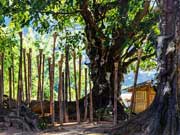 The last primitive tribe in China
The last primitive tribe in China China's first intelligent security robot debuts in Chongqing
China's first intelligent security robot debuts in Chongqing A Total of 3,552 Subscribers Vanish In Two Days; YouTube Closes All Doors to Users’ Inquiries
A Total of 3,552 Subscribers Vanish In Two Days; YouTube Closes All Doors to Users’ Inquiries Out of this world! Futuristic UFO-shaped yacht has its own garden and a stunning underwater viewing deck
Out of this world! Futuristic UFO-shaped yacht has its own garden and a stunning underwater viewing deck An old tea house in Chengdu
An old tea house in Chengdu Furious Customer Crushes All the Buns from Vendor Just Because He Was Given the Wrong Flavor
Furious Customer Crushes All the Buns from Vendor Just Because He Was Given the Wrong Flavor